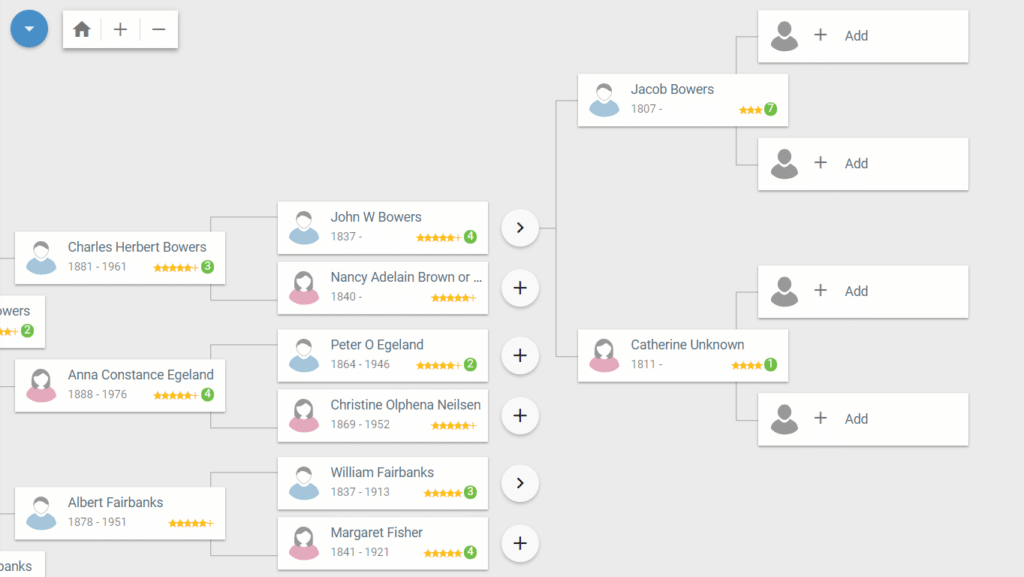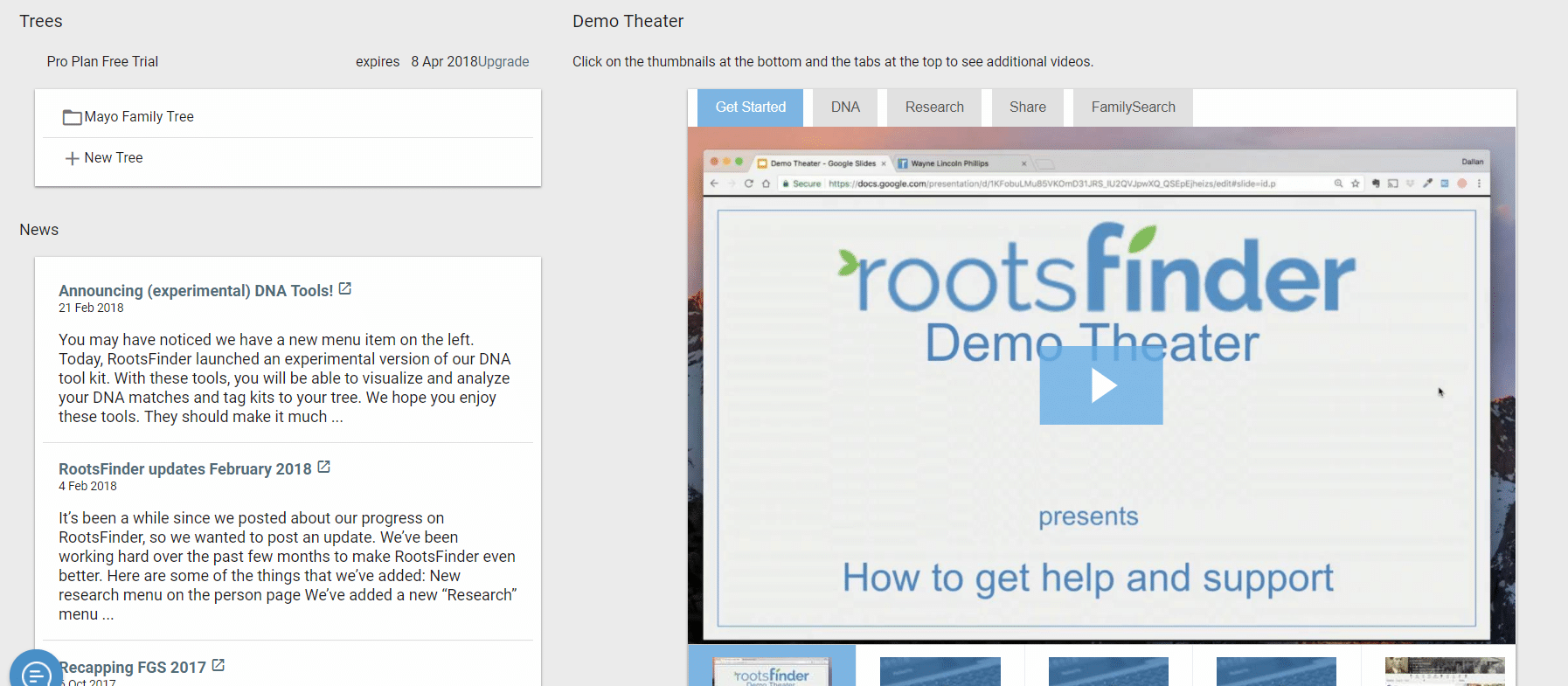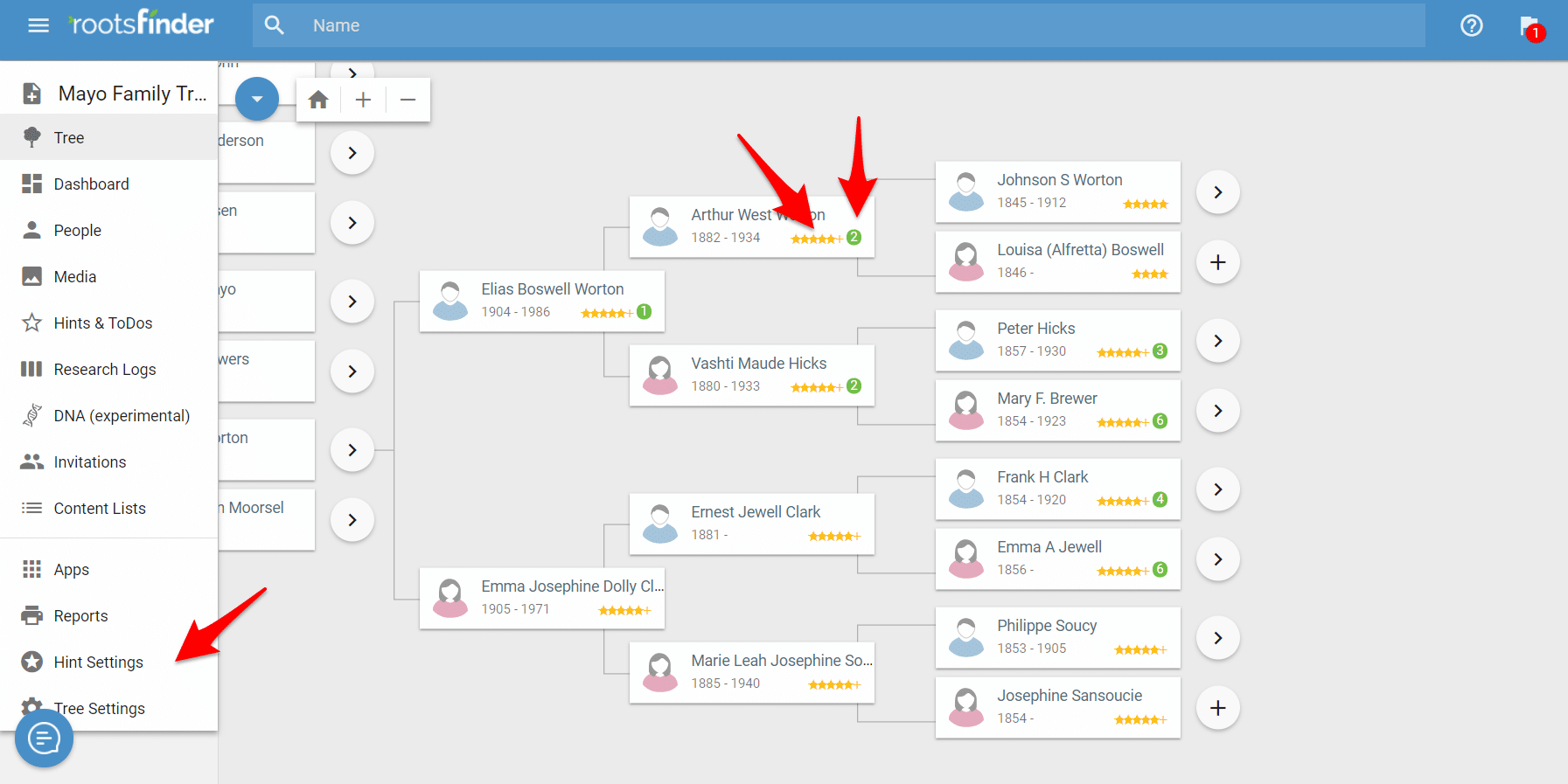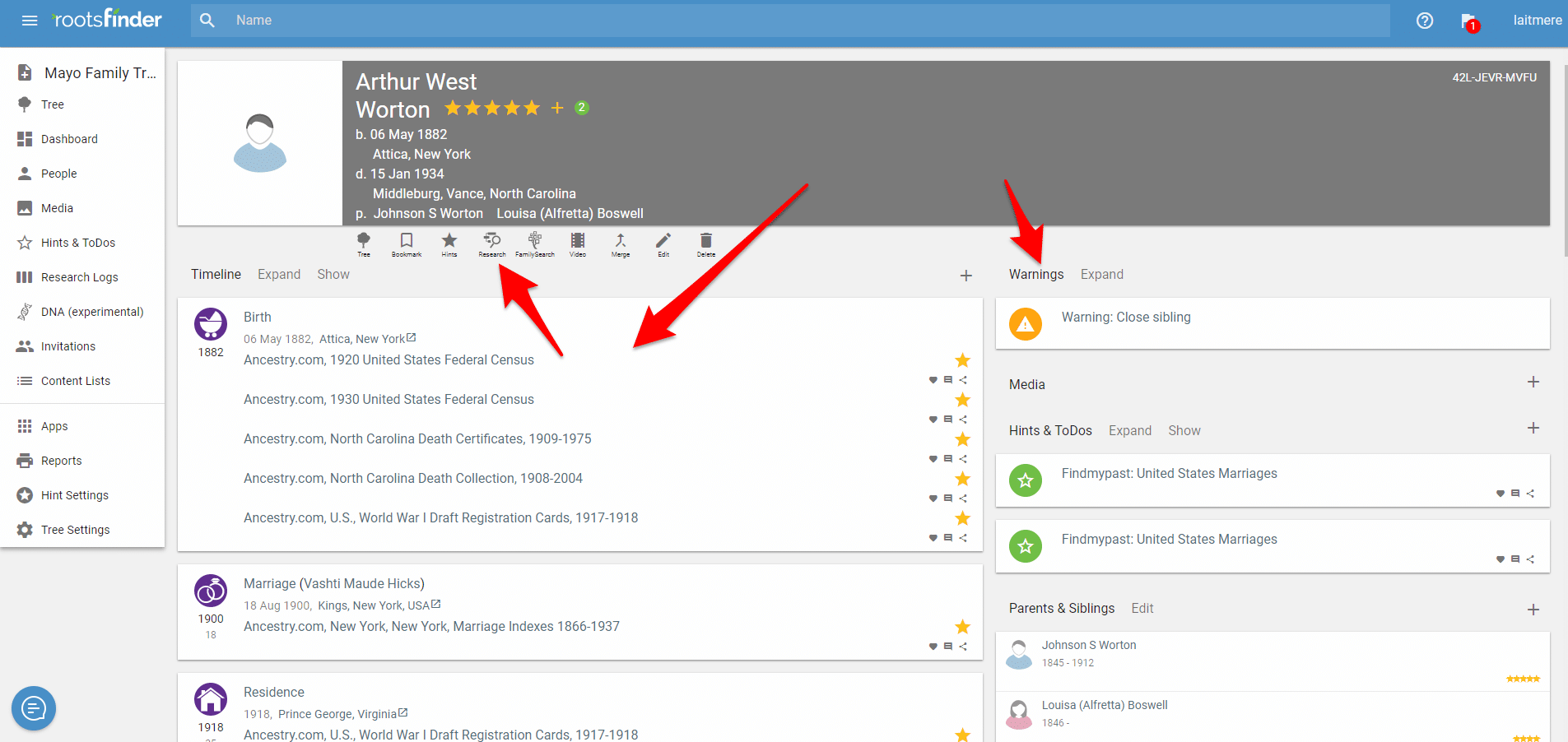For avid family historians the search for the perfect tree program can be a challenging one. We need a very specific set of tools, intelligent ways to enter and view data, robust reporting options and ongoing stability – but we also hope for an intuitive and attractive design, access from any device and the ability to easily share our work with family members and collaborators. It’s a tall order to fill.
That’s why we recently did a roundup of family tree choices here at Family History Daily to help you discover your perfect program, and there are certainly some very good options out there. But there is always room for improvement, so when I had a chance to explore a brand new online option that promises to provide powerful tools at no cost I was pretty excited.
This new tree program is RootsFinder and it was developed by Dallan Quass, former CTO of FamilySearch and creator of WeRelate.org and GenGophers.com. RootsFinder has been in the works for more than three years but only very recently have they been ready to go fully live.
Why RootsFinder is Worth Your Time
The fact that so much time and care was put into “getting it right” before making the tree widely known was my first indication that this was going to be something worth using. And, honestly, I haven’t been disappointed. I’ve been using RootsFinder on and off for several days now and have liked almost everything I have seen.
The first thing that really got drew me in was the fact that RootsFinder is free and that it is not associated with a paid subscription service. Don’t get me wrong, I use and love the trees and subscriptions of several paid services, such as MyHeritage and Ancestry. I really don’t think a modern researcher can get away with using only one family tree – you’d be missing out on too many great tools if you did. Ancestry’s tree is one of the best online options out there and MyHeritage’s tree syncs so well with DNA research that it can’t be missed for that purpose.
But the problem with these types of trees is that they are intimately tied in with paid record collections and services. Although they can certainly be used without a subscription (and free record collections are available via paid sites) the end goal is always to keep you on the site, paying for record access.
Hosting your tree somewhere that is independent of that connection is very freeing and allows you to more easily incorporate many sources into your research. It is especially helpful if you have limited financial resources.
Of course, RootsFinder is not the only free, online family tree program not associated with big record sites (WikiTree is an excellent example) – but, thus far, it is the only one I have used that meets all of the following criteria.
– Developed by a trusted source (in this case a developer with a proven track record of responsibility and dedication to the genealogical community)
– Fully online and mobile-friendly (making it accessible from anywhere and always backed up)
– A truly clean and modern design that is easy to navigate (something many other solutions fall short of)
– A simple way to enter and view sources (RootsFinder does a really good job of this)
– Powerful tools and reports (including descedancy reports, fan charts and wall charts, ancestor reports that are suitable for books, video and photo mosaics and more)
– Integration with external record sites (RootsFinder can pull in external hints from FamilySearch, FindMyPast, American Ancestors, Billion Graves, Find a Grave, Ancestry, and MyHeritage and offers a browser clipper for adding records to your tree from outside sources easily)
– The ability to easily share your tree or keep it private, all while restricting editing (the private option is a paid upgrade, but limiting editing is not)
– Cost-effective (RootsFinder is free forever, although they also offer a very reasonably priced upgrade for those who want a few extra features)
You’ll also find a research log and to-do functionality for staying organized.
Is RootsFinder Actually Free?
As mentioned above, RootsFinder is free – but they do offer a paid option for $35 per year that allows you some additional options. Here’s how the two plans compare.
The forever free option includes:
- Unlimited hints
- Multiple trees
- Almost all of the tools and reports
- FamilySearch integration
- RootsFinder Web Clipper & ToDo creator
- Research Logs
- DNA tools (for now, may be a pro feature in the future)
- 1 GB media storage
The paid option, which works out to just a few dollars a month, includes these features as well:
- Turn off ads (for tree invitees also)
- Private tree option (living people are private in the free version always)
- GenSmarts hints (see below)
- Remove watermark from mosaics
- 10 GB media storage
While it would be ideal for everything be free, sites must support themselves somehow and the price of the upgraded option is quite low. You’ll automatically get a 30 day trial of the pro version when you sign up so you’ll have a chance to explore the pro features at no cost. No credit card is required so they will not extend the paid option automatically. You could very easily use this tree for free forever since they have not limited the core functionality in any way, but if you need or want the pro features (like a private tree) you won’t pay an arm and a leg.
How to Give RootsFinder a Try
If you’d like to give this new tree option a spin, signing up is pretty straightforward. Simply head over to the homepage and select “Start Your Family Tree Now.”
Once you click this button you will be asked for some basic information about yourself – name and email. I encourage you to take the time to read the privacy and terms linked to from this page. In reviewing them myself found I found them to be very similar to those on other sites – which means you are granting some rights over your content to RootsFinder. We’ve written before about how privacy and ownership works with online trees.
Once you have reviewed and accepted the terms you will be able to choose whether or not you want a public or private tree. Because you receive 30 days of the pro version free of cost you will be able to test a private tree if you like, but, as mentioned, you will need to become an ongoing pro member if you intend to keep it this way. Living family members are always kept private.
After choosing whether or not to keep your tree private you can start a fresh, new tree or upload a GEDCOM. If you need help downloading a GEDCOM from Ancestry read this article. The upload takes only a few minutes.
Once the process of creating an account is completed you will be asked to verify your email and will have access to your tree. You will now also be presented with a help center (Demo Theater) and we encourage you to use it. There are a variety of short videos that explain the functionality of RootsFinder so that you can make the most of the site. You’ll also find easy access to help on every page (look for the blue button on the bottom left) and a variety of help articles.
Clicking on your tree name on this screen will take you to your tree and all of the tools associated with it. At this point I suggest that you take a minute to edit your tree and hint settings. You will find those, along with easy access to various tools on the left sidebar (see the screenshot below).
The Tree Settings allow you to set the home person and a few other options. The Hint Settings are where you will tell RootsFinder whether or not you would like them to provide hints to you from various sources. Some are from free sources and some are from paid ones. You can choose the ones that fit your needs and current subscriptions.
Once you decide which hints to see they will start showing in your tree almost immediately. You will notice a green circle on a person’s tree entry and this denotes the number of hints found. How useful they are to you will depend on which sites you intend to use and what information you already have.
The stars next to this number show the number of sources you have already attached to your tree.
I really love the way the RootsFinder tree looks. It is clean and readable and everything is easy to find.
I’m not going to examine all of the features of RootsFinder because you would be best served by starting your own tree, checking out the help videos provided and exploring the features as they relate to your research – but I do want to point out a couple of elements that I really like.
The first is the ease at which you can view sources that have been added to your tree. I love that they have put this information front and center since good sourcing is at the core of productive and accurate research.
The next is the “Warnings” area – this functionality will let you know if there is anything unusual about the data for a person so that you can explore it and make changes if needed. You might get a warning, as I did, about a sibling’s birth being too close in date to another sibling. You can view all of the warnings for your tree (and fix them) by clicking on Content Lists and then Warnings in the left menu area.
Finally, I really appreciate the thought that has gone in to helping researchers do what they love the most – research. When in the profile view for a person simply click on the Research icon to find a list of options that will help you build your tree. These include:
– Search Hints: These are searches in important collections propagated with your ancestor’s details. This is a good way to find new collections to search and saves time entering information. Right now it appears to mostly link to FamilySearch (free) and Ancestry (mostly paid) but new sites are likely to be added in the future.
This is separate from the Hints and ToDos section in the profile. That section features actual record hints for your ancestor from the sites you selected in the Hint Settings.
– GenSmarts: This is a really interesting feature that suggests record collections to you based on the information in your ancestor’s profile. Some are online resources and others are offline (although you may find some of these collections online with your own research).
A GenSmart hint does not mean that RootsFinder has located your ancestor in this collection – only that it makes sense to search it based on details you already know. This is a pro feature but you can try it free for 30 days automatically.
Here is a hint from a report in one of my trees. This same ancestor has thirteen of them, and I really feel like this feature presents a unique way to move outside of your comfort zone and discover new research opportunities.
Kings New York Marriage Records
Researching the Kings New York Marriage Records makes sense because he was married on 18-AUG-1900 in Kings, New York, United States. This suggestion is important because it appears to be either a source for an event where you have no sources, or because there is a high probability that it will be an additional source to what you currently have.
Family History Library
Marriage index to Manhattan and Bronx (A-Q), 1900. (Q-Z missing and not microfilmed for the Bronx); film # 1653853 #3 Brooklyn, Queens, Richmond (Staten Island) 1900 All boroughs 1901-1905; film #1653854
You’ll also find links to research guides and other help related to your ancestor’s specific locations, as well as an evidence report, in this area.
And don’t forget to check out the web clipper for easily adding records from other sites to your tree. You’ll find information about that in the help section.
Overall, it really feels like RootsFinder was created by a genealogist for genealogists. It is beautifully and intuitively designed, packed full of useful tools, offers a variety of very unique features and is mostly free. This may be the tree option many of you have been looking for.
Enjoy!
You Might Also Like:
The Best Family Tree Programs: A Detailed Guide
Who Actually Owns the Family Tree You Have Online?
By Melanie Mayo, Family History Daily Editor





It’s been what? 10 years? And they still don’t have an iOS App let alone a fully functional user interface with proper integration to other research websites?
Roots Finder is the most horrible system to use – very difficult to delete errors, very difficult to see the full tree on one computer screen, print-outs leave much info out….glad I didn;t pay money for it! Surprised you say you like it…
Does Roots Finder have an accompanying (or available) User’s Guide so one can look up “how to…” something?
When you have a tree on RootsFinder, you have the option of getting hints on your tree from eight different websites: FamilySearch, Findmypast, AmericanAncestors, Geni, WikiTree, and others. In order to get hints from FamilySearch, you agree to have a copy of your tree stored on FamilySearch Genealogies, where it is preserved and made available for FamilySearch users to view but not change. When you sign up for hints from FamilySearch, you check a box that says “I understand that in order to get free leads from FamilySearch, a copy of my tree is kept in the FamilySearch Genealogies archive, where it is continuously synchronized and preserved and the deceased people in my tree can be searched, but not changed, by FamilySearch users.”
RootsFinder recently had a bug where trees that were deleted from RootsFinder were not deleted from FamilySearch Genealogies like they should have been. Marlene helped us identify that bug. We have since fixed the problem and removed the trees from FamilySearch Genealogies that should have been deleted.
I was surprised to find that two ‘test’ trees that I uploaded to RootsFinder have published as genealogies on Family Search. I may have missed it but don’t recall seeing anywhere that this would happen. They appear as ‘Partner Trees’. I have deleted them from Roots Finder but currently both still appear in Family Search genealogies. I was aware there was integration with Family Search but thought this was on an individual ‘match and update’ basis. Just a heads-up in case anyone else doesn’t realise that the data is uploaded to Family Search and immediately available publicly via the genealogies.
So if I put my tree on roots finder it automatically shares on family Search? Am I reading it right?
I am so pleased to find RootsFinder. I use a Chromebook and it works perfectly!
I have tried many other sites, but using them on Chromebook is not always easy.
Now I am cleaning up all my families on other sites and gradually moving them to RootsFinder.
Thank you for the info regarding this. I am certainly going to try it. I have been doing research off and on for approximately 45 years but technology is bypassing me. I am 84 but still trying. It sounds like a wonderful thing and I am anxious to start.
Thank you for the kind words! We’re excited to be working on RootsFinder. We continue to enhance it based upon feedback from the genealogy community.